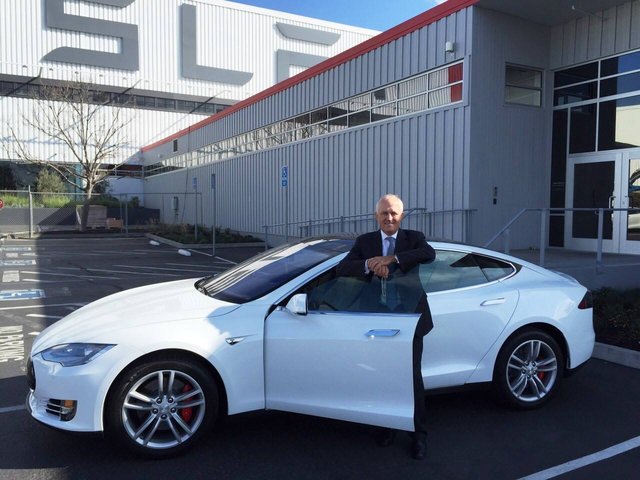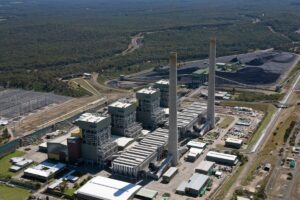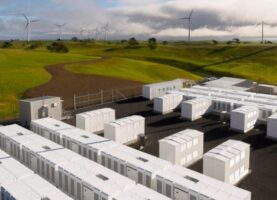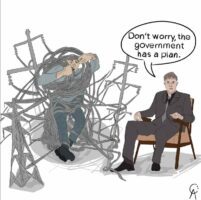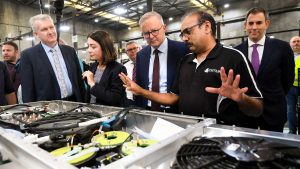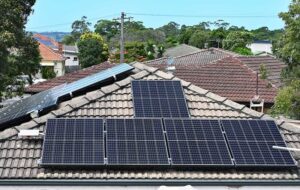It was just six years ago when Malcolm Turnbull, then deposed Liberal Party leader, attended the launch of the Beyond Zero Emissions Zero Carbon plan for 2020, which suggested Australia should and could attain 100 per cent renewable energy by 2020.
Turnbull, by all accounts, was an enthusiastic participant, and was particularly excited by solar towers and molten salt storage. “There is a real opportunity there, with that technology, to generate baseload power from solar energy – something of a holy grail.”

Five years later, as a front bencher in an Abbott government, Turnbull took himself to the Tesla factory where he drove the Model S electric vehicle and waxed lyrical about battery storage and hailed the energy revolution.
“Batteries have the potential to revolutionise the energy market, reducing peaking power requirements, optimising grid utilisation of renewables and in some cases enabling consumers to go off the grid altogether,” he enthused in his personal blog.
Fast forward 18 months, and the man who insists he wears “innovation” as his calling card appears to have forgotten everything he ever learned about new technology, and its ability to overcome challenges – such as climate change and decarbonising the electricity grid.
In the fallout of the massive blackout in South Australia, and the price surges experienced in July, Turnbull has reached for the lowest common denominator. No longer does he think that 100% renewable energy is possible by 2020, he thinks states aiming for half that target in twice the time is a recipe for disaster.
It seems that everything he has learned about a smart grid and new technologies has been thrown by the way-side to appease the conservative rump that will not allow Australia to shake its addiction to and dependence on coal and gas.
Turnbull described the events in South Australia as a “wake up call” over ambitious wind and solar, even though energy authorities and the grid owners said the colour of energy – green, brown or black – would have made no difference because it was the transmission wires that collapsed and caused the massive outage.
Labor has responded angrily to Turnbull’s intervention, describing it as “ignorant rubbish”. But the demonisation of renewable energy has extended even to the ABC, where chief political correspondent Chris Uhlmann has taken it upon himself to peddle fossil fuel nonsense about the role of wind and solar. He even warned of a “national blackout” if Australia’s Labor states continued their pursuit of renewable energy.
It’s remarkable how quickly a national conversation can fall into the gutter of bipartisanship and ignorance. But the legacy could be damaging: dumb politics could leave Australia with an even dumber grid, just at the moment when the country could seize Turnbull’s “innovation” agenda and lead the world on an energy transformation.
The fact that Australia is now talking about slowing down its shift to renewables, rather than accelerating it, seems remarkable, and ignores the fact that wind and solar could actually make the grid more resilient, and not less so as claimed by the fossil fuel lobby and commentators like Uhlmann.
Indeed, in our rebuttal to Uhlmann’s dire predictions, we point to the experience in Germany, where the increase in wind and solar has actually made the grid more stable, and halved the cost of services needed to keep it from having a blackout.
Australia’s is a remarkably different reaction to other states and countries that have experience major blackouts. Hawaii had one in 2008, and when it fretted about the amount of solar that was being installed, that problem was solved with smart software. It has responded with a law that requires it to hit 100 per cent renewable energy by 2045.
Japan had one two years ago, and responded with a plan to reinforce the grid by ensuring that households and businesses installed their own generation, solar panels, and their own back-up, battery storage, to help ensure the lights stayed on.
The state of New York responded in an even more remarkable fashion. After Hurricane Sandy wiped out power for millions, and for some tens of thousands for weeks, the state responded with a plan called “Reforming the Energy Vision”.
It takes account of climate change and new technologies, shifting away from a reliance on centralised fossil fuel technologies to clean energy, micro-grids, and smart solutions that could a repeat should another super-storm eventuate.
But experts fear that Australia risks going backwards rather than forwards.
Glenn Platt is the former head of research, grids and energy efficiency at CSIRO, and now heads a start-up called Evergen, that uses CSIRO technology to provide an “energy services” company that provides solar and storage to consumers.
Platt says the conversation around South Australia has ignored the hidden benefits of renewable energy. They are not just about climate change and oher environmental benefits: they can actually make a huge contribution to grid stability.
“Sure there can be challenges to very high renewable energy penetration. But they are solvable: Just having batteries in their house – your own back-up power supply, through to the sophisticated end, where you operating with micro grids and large amounts of distributed assets.”
Those distributed assets, locally produced renewables such as wind and solar, couple with storage means that “if the grid falls down around you, you can island your area and keep things reliable.”
This has been recognized by network owners, including those in South Australia. Queensland and Western Ausralia, which proposes a whole new “modular” model of smart renewasble based micro-grids, that is says is cheaper than the current model and more reliable.
But, like Platt, Western Power also laments the fact that Australia’s regulatory environment, the rules of the market, do not allow such innovative solutions.
“The challenging question around large numbers of micro grids etc is how you make the business work. The technology is capable of doing it, but the model is no there.” And the incumbent fossil fuel generators are fighting hard against any rule changes that could accelerate that shift.
Tom Quinn, the head of the Future Business Council, says what happened in South Australia, where the whole grid shut down, as it was designed to do, is not acceptable. There are alternatives.
“Mega storms like that are becoming the new normal under climate change. Shutting down the entire grid is a not a plan for the future. We need urgent investment in a grid that is capable of withstanding increasing extreme weather whether that’s storms, floods or bushfires.”
And that means being smart about the technology we use, and fast-tracking plans for a smart and resilient power grid that’s able to withstand the impacts of a changing climate and that is built for the reality of a 100 per cent renewable future.
The Future Business Council wants state and federal government to invest in a diversified grid (rather than loading up with more gas generators), providing more incentives for battery storage, use a mix of renewable energy and storage to improve localised grid resilience, and increase investment in diversified mix of renewables.
It also wants more interconnections between South Australia and Victoria, and a direct connection between South Australia and New South Wales, to improve grid resilience. Others even suggest a link between South Australia and Queensland. You can imagine a new set of big power lines linking discreet smaller grids and micro grids with built in resilience.
The events of the past year in South Australia could be a watershed in Australia’s energy markets. Not in the way that the fossil fuel lobby might want to imagine – they have been hoping and praying for a sequence of high price and blackout events so that they can throw their nonsense at renewables and put a “go slow” on the energy transition.
But the more dramatic the event, the more deeply we need to think about it. Australia has a simple choice – it is not just about coal and gas versus renewables, as the politicians currently want to put it – it’s about moving on from a grid from yesteryear and make it fit for the future.
The events of the last few months should be a wake-up call, as Turnbull likes to describe it, not of the threat of renewable energy, but of the dangers of business as usual and sticking with a dumb grid, dumb rules and dumb business models.
The market operator did a remarkable job restoring power so quickly in the circumstances, but Australia needs to move on. And that is about embracing new technologies, wind and solar and various forms of storage – 15 minutes of battery storage may have been enough to avert, or at least minimise, this week’s disaster – and smart software, as well new business models and smart thinking about the future – that can bring this altogether. But let’s not hold our breath.

